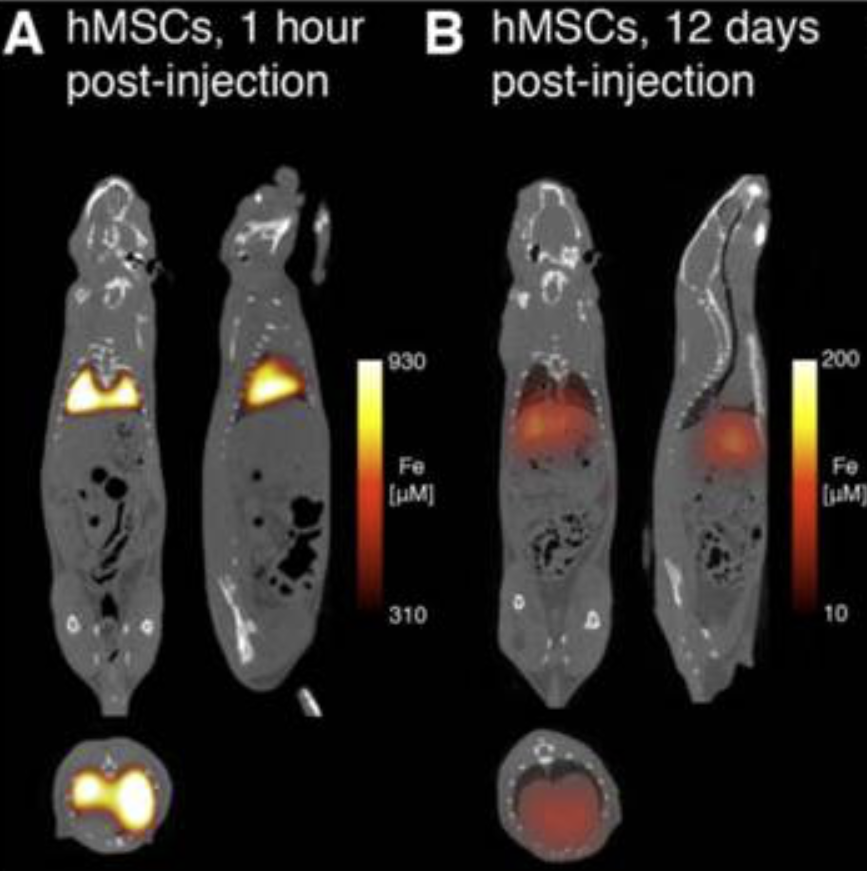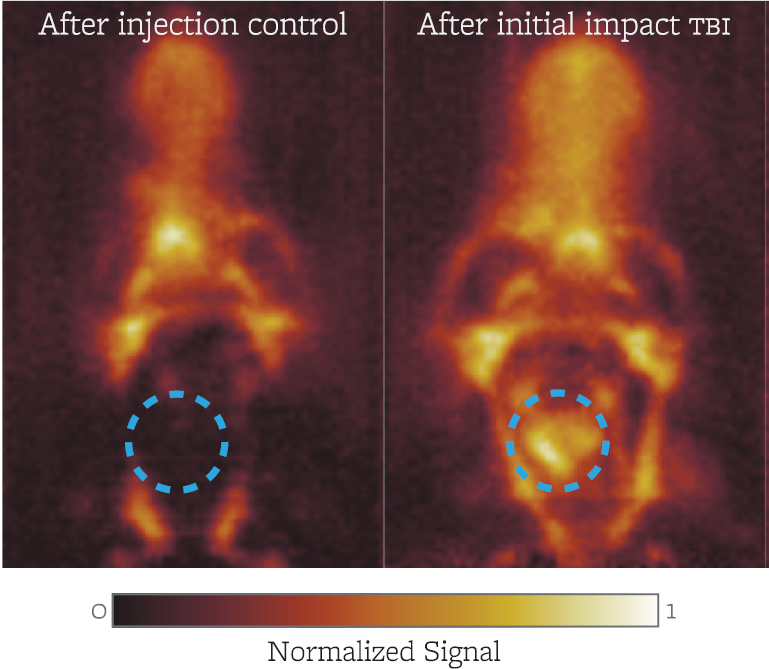Cell Tracking

Stem cell therapies offer strong therapeutic promise for regenerative medicine; however, continuous monitoring of differentiation, migration and proliferation of stem cells in vivoremains difficult. MPI especially suited for long-term in vivo cell tracking: its iron-oxide tracers have an ~80-day half-life, it is both linear and quantitative, and it has a current sensitivity of 200 cells per voxel. We have previously demonstrated that MPI can be used for long-term tracking of the biodistribution of stem cells. Current projects include the development of MPI techniques for sensing the viability of stem cells; this is essential for classifying successfully differentiated stem cells from those phagocytosed by macrophages.
High Resolution MPI

MPI resolution at 7 Tesla is currently at 1.5 mm with commercial nanoparticles, but researchers in our lab and collaborators worldwide have shown up to 10X better resolution with new nanoparticles. High resolution imaging enables more accurate diagnoses. Moreover, by pulling resolution from the nanoparticle design — instead of from a hefty 7 Tesla gradient magnet – faster scanners or even portable low gradient scanners can be engineered.
Magnetic Particle Hardware for biosensing applications
Magnetic particle relaxometry utilizes the strong reaction of the particle to the local environment during Brownian relaxation to detect changes. This can be used for viscometry or binding detection, in conjunction with sensitive bogeys. We develop novel hardware towards miniaturized devices for portable use.